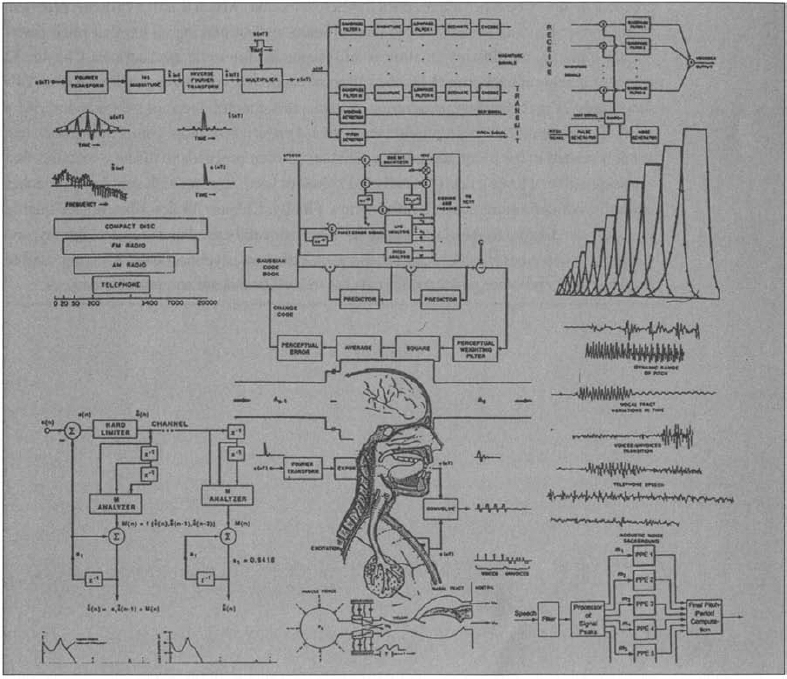PART VII
![]()
SYNTHESIS AND CODING

And computers are getting smarter all the time; scientists tell us that soon they will be able to talk with us. (By “they,” I mean computers; I doubt scientists will ever be able to talk to us.)
–Dave Barry
IN PART VII we proceed to applications for which a speech signal is generated for human listeners. As with recognition, we begin with classical methods and then extend the discussion to the more refined approaches that are current.
Chapter 30 describes the basics of speech-synthesis systems. Although many modern systems are concatenative, newer approaches based on statistical analysis-synthesis methods are also discussed, as well as several methods that are of historical interest. Chapter 31 proceeds to describe basic approaches to pitch detection, which is still a difficult problem. Many modern coding systems avoid this difficulty by not making an explicit pitch determination per se, but this information is still important for some applications. Chapter 32 provides a general background for the different classes of vocoders; as with Chapter 24's description of deterministic recognition systems, this chapter does not so much describe a method in current practice as provide background material for more complex methods that are still related to the ...
Get Speech and Audio Signal Processing: Processing and Perception of Speech and Music, Second Edition now with the O’Reilly learning platform.
O’Reilly members experience books, live events, courses curated by job role, and more from O’Reilly and nearly 200 top publishers.

